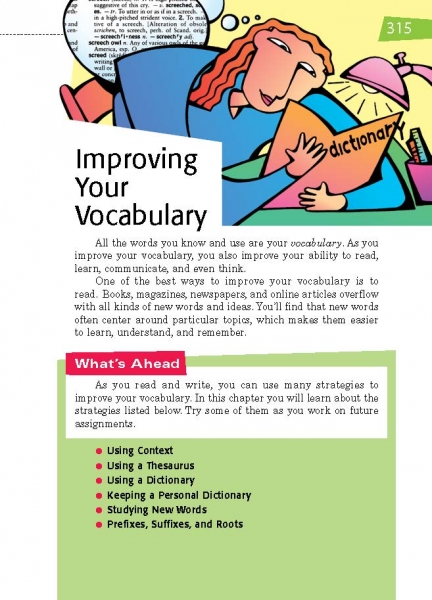Page 315 from

Start-Up Activity
Ask for a volunteer to read page 315 aloud. Then discuss with students the value of reading, even when English is their second language. One of its main values is that it helps students build their vocabularies. Then select one word to analyze, as in the example that follows:
- eject: The pilot ejected from the burning airplane.
Have a volunteer define the word eject and explain the clue in the sentence that helped him or her define it. Then as a class explore its word parts:
- e (like ex) means “out”
- ject means “throw”
Point out that students will learn strategies like these in this chapter.
Think About It
“English spelling is weird . . . or is it wierd?”
—Irwin Hill

Start-Up Activity
Ask for a volunteer to read page 315 aloud. Then discuss with students the value of reading, even when English is their second language. One of its main values is that it helps students build their vocabularies. Then select one word to analyze, as in the example that follows:
- eject: The pilot ejected from the burning airplane.
Have a volunteer define the word eject and explain the clue in the sentence that helped him or her define it. Then as a class explore its word parts:
- e (like ex) means “out”
- ject means “throw”
Point out that students will learn strategies like these in this chapter.
Think About It
“English spelling is weird . . . or is it wierd?”
—Irwin Hill
